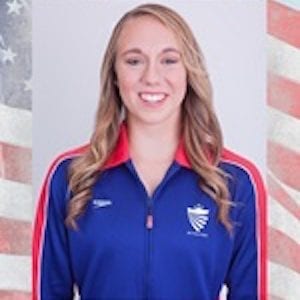
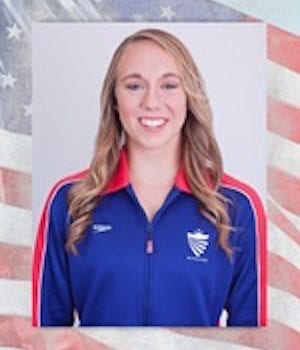
Aqua Force: Influential Bay Area Synchronized Clubs
AquaticsBlog August 21, 2014 Dave Keifer 0

Two Bay Area swim clubs helped pioneer synchronized swimming, and remain a major national influence.
Here in the Bay Area, when we think of the success of our sports teams, a quick rundown of Super Bowls, World Series, and even the odd NBA championship may conjure up great memories. But as for sustained greatness at the highest level, one sport stands above the rest: synchronized swimming. The Santa Clara Aquamaids and Walnut Creek Aquanuts not only have combined for 27 national team championships, but regularly form the backbone of U.S. National and Olympic teams. That makes them an Aqua Force: Both influential Bay Area synchronized clubs.
A glance at USA Synchro’s website roster reveals that more than half of the 23-swimmer combined roster for the junior and senior national team is comprised of Aquamaids and Aquanuts, most of whom have attended area high schools.
The list includes Claire Barton, Katie Gu, Isabel Malcolmson, Rebecca Moody, Sarah Rodriguez, Karensa Tjoa, and Amanda Urke of the Aquamaids. And Karina Boyle, Gillian Brassil, Dana Drury, Joanna Langner, and Sandra Ortellado of the Aquanuts.
“It’s really a strong rivalry, but it’s healthy and good” said 2008 Olympian Kim Probst, who swam for and now coaches the Aquanuts. “With the U.S. struggling at the international level now, it’s really brought us together. We’re more unified and willing to work together to get it back on track.”
That’s the next challenge for both clubs, to be at the forefront of a U.S. resurgence. The U.S., led by individuals such as matriarchs Gail Emery of the Aquanuts and Chris Carver of the Aquamaids, was among the countries that pushed hard for inclusion in the Olympic Games and was among the early powers.
National Influence
Synchro was unveiled as a medal sport in 1984 and, for the first three Games, the U.S. and Canada won every medal. However, since 2000, Russia has won every gold. And, in 2012, the U.S. failed to earn one of the eight qualifying spots for London. In fact, U.S. synchro was represented by only a single duet team, which included the Aquanuts’ Mariya Koroleva, a graduate of Las Lomas High in Walnut Creek.
The problem, says Stanford coach Sara Lowe, a former Aquamaids’ star, is that the U.S. has changed in both style and training, while countries like Russia and China are taking different approaches and have greater funding.
“The sport is much faster now,” said Lowe, who moved from Texas to join the Aquamaids at age 15 and graduated from Monta Vista-Cupertino. “I see the pros and cons of it. When I was growing up, we were doing things a lot more controlled. Technical skills were required then and there were no acrobatic lifts or throws.
“Today’s sport is much faster, with a number of acrobatic movements. Now, you’re not getting the technical side until they’re seniors. It’s hard to teach that when you get to that level.”
Lowe, who won a team bronze in the 2004 Olympics, also sees an emphasis internationally on land-based training – including strength and cardio and core training. While U.S. clubs are also going that direction, “you’re going to see a bigger shift in the next couple of years,” she said. “It’ll be interesting to see what happens.”
One difference in the U.S., is the need to attract young swimmers. The U.S. doesn’t have academies where swimmers are supplied by national governing bodies. In fact, U.S. Synchro gets no funding from organizations like the U.S. Olympic Committee.
“When you’re a club, you have to hook them with an element of fun,” Probst said. “They love the music, they love to swim, they love to dance. They put athleticism first and synchro second.”
It was that confluence of music and movement that drew Carver. Growing up in 1950’s Palo Alto, Carver was heavily influenced by actress Esther Williams, whose film roles showcased what would become synchronized swimming.
The essence of the sport is essentially unchanged since Williams mesmerized audiences with grace and style, inspiring a new form of movement and athletic competition. Carver, who became the Aquamaids’ head coach in 1984 and continues in that role, took it one step further, building a reputation as an innovative choreographer and coaching her teams to dynamic performances.
Aqua Force
Four Aquamaids — Becky Dyroen-Lancer, Jill Sudduth, Suzannah Bianco and Heather Simmons-Carrasco — came up through the club’s age-group program and culminated their careers by winning gold at the 1996 Atlanta Games in team routines choreographed and coached by Carver.
In Walnut Creek, Emery created a coaching tree that rivals that of Bill Walsh. Besides heading the Aquanuts for 30 years and serving as the head coach of three U.S. Olympic teams, three of her protégés — Heather Olsen, Tammy McGregor, and Probst — won U.S. Synchro Coach of the Year honors after being coached or mentored by Emery.
Emery was on the U.S. team that competed in an exhibition at the 1972 Munich Games in the hopes of drawing support for future inclusion. Today, she is retired from official coaching roles, but remains a daily presence at the pool, teaching youngsters how to swim, or serving as a sounding board for the club coaches.
“She was hugely instrumental in getting our sport added to the Olympic Games,” Probst said. “Gail was probably my biggest influence. She was hard on me, but tender. She has this unique ability to be able to communicate with any age group and with swimmers of any ability.”
Largely because of these two individuals, the clubs grew in stature and the Bay Area became the U.S. capital of synchronized swimming, drawing from around the country, and even the world.
But it’s not easy. Certainly synchro is one of the most demanding sports around. Besides the conditioning and flexibility, there is that water part of it, too.
When the Aquamaids’ Claire Barton is asked to provide an insight into synchronized swimming, she offers this comparison: “It’s like running a mile while holding your breath for half the time,” Barton said. “And smiling at the same time.”
Barton spent as much as seven or eight hours a day in the pool, even while attending Los Gatos High, where she graduated this spring. “Sometimes, it’s hard to keep smiling,” she said. “You think, ‘I’m exhausted. I just can’t do this.’ But you have this club pride. It takes you to another level. That’s what gets me through the day.”
Elite competitors describe a sport that’s perhaps unparalleled in its demand for long hours and precise teamwork. This combination creates close relationships that make the process worthwhile.
Barton, whose mother Patti was a longtime synchro coach and sister Carrie, a 2000 Olympian, said she would often stay awake until 2 a.m. doing homework, but still managed to secure A’s and manage her time. “When you have a limited amount of time, it doesn’t matter how tired you are,” she said. “You just know that you have to finish.
“But I don’t have any regrets. I got to go to my prom and to graduation. I went to all the dances. And I don’t feel like I missed anything in high school. And I gained so much with synchro. They’re my second family.”
While Barton has committed to compete through the 2020 Olympics, Karina Boyle is retiring from competition. Boyle, a four-time senior national-team selection and a recent graduate of Northgate High in Walnut Creek, will attend UC Santa Cruz this fall.
“I wanted to experience college as a normal student,” she said. “It’s time for me to focus on the rest of my life.”
Boyle remembers being awed by the experience of attending one of Walnut Creek’s summer swim shows with her friend, Rina Horii. The theme was “Under the Sea,” taken from the animated film, “The Little Mermaid.”
“It was my favorite movie of all time,” Boyle said. “I said, ‘I have to do this!’”
As Boyle progressed through the ranks, she set her goals toward the 2016 Olympics. But over the past year, she grew to realize that the Olympics didn’t seem as realistic as they once did. Plus, she felt her priorities beginning to change.
Boyle is not ready to give up synchro altogether. She’ll continue to come to the pool and help the young swimmers if she can.
“It was a very tough decision,” Boyle said. “My life was shaped around synchro. It made me a more confident person. I was completely shy. I would never go up to a new person and talk. But through performing, I’ve learned to project confidence in everything I do.”
Boyle has one last performance in her. She will perform in Walnut Creek’s annual swim show in late August — the event that turned her on to the sport, and ignited her Olympic dreams.
Perhaps she also will inspire another young swimmer, who will dream big while getting a chance to swim, dance, and smile all at the same time. What could be better?

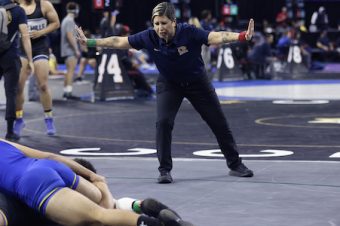
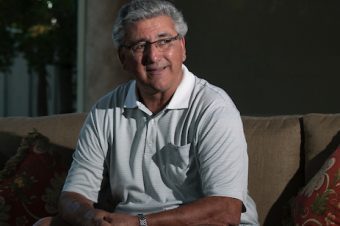


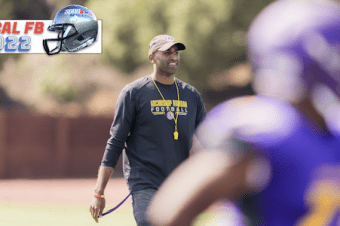


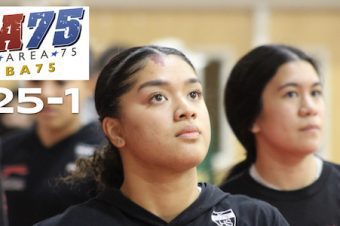
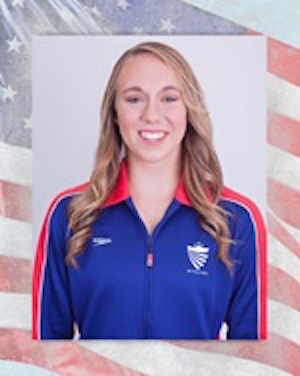

No comments so far.
Be first to leave comment below.